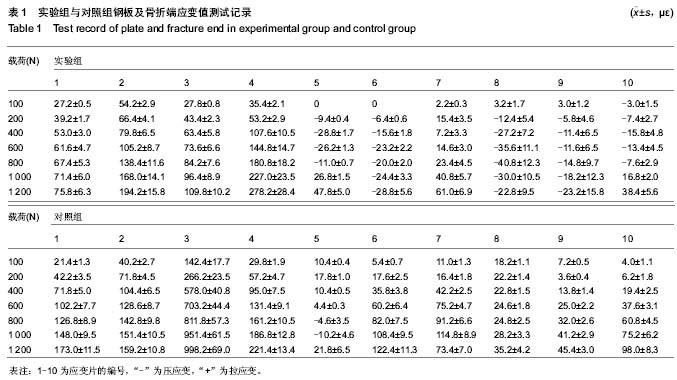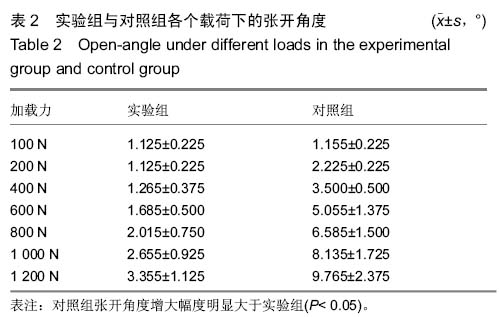| [1] Biber R,Bail HJ,Stedtfeld HW.Lateral cortical notching in specific cases of delayed unions or nonunions after intertrochantericand reversed fractures. Arch Orthop Trauma Surg.2013;133(4):495-501.
[2] Gunadham U,Jampa J,Suntornsup S,et al.The outcome in early cases of treatment of subtrochanteric fractures with proximal femur locking compression plate.Malays Orthop J.2014;8(2):22-28.
[3] Kumar N,Kataria H,Yadav C,et al.Evaluation of proximal femoral locking plate in unstable extracapsular proximal femoral fractures: Surgical technique & mid term follow up results.Clin Orthop Trauma.2014;5(3):137-145.
[4] Lee WT,Murphy D,Kagda FH,et al.Proximal femoral locking compression plate for proximal femoral fractures.Orthop Surg (Hong Kong).2014;22(3):287-293.
[5] Wieser K,Babst R.Fixation failure of the LCP proximal femoral plate 4.5/5.0 in patients with missing posteromedial support in unstable per-, inter-, and subtrochanteric fractures of the proximal femur.Arch Orthop Trauma Surg.2010;130(10): 1281-1287.
[6] Wang Y,Yang YY,Yu ZH,et al.Comparative study of intertrochanteric fractures treated with proximal femur locking compress plate in aged.Zhongguo Gu Shang. 2011;24(5): 370-373.
[7] Ziebarth K,Slongo T.Proximal Femoral Osteotomies with the Paediatric Hip Plate (LCP): Valgus osteotomy.Oper Orthop Traumatol.2015;27(3):210-220.
[8] Weiser L,Ruppel AA,Nüchtern JV,et al.Extra- vs. intramedullary treatment of pertrochanteric fractures: a biomechanical in vitro study comparing dynamic hip screw and intramedullary nail.Arch Orthop Trauma Surg.2015; 135(8): 1101-1106.
[9] Glassner PJ,Tejwani NC.Failure of proximal femoral locking compression plate: a case series.Orthop Trauma.2011;25(2): 76-83.
[10] Gunadham U,Jampa J,Suntornsup S,et al.The outcome in early cases of treatment of subtrochanteric fractures with proximal femur locking compression plate.Malays Orthop J.2014;8(2):22-28.
[11] Chen Y,Liu S,Lin P,et al.Comparative biomechanical study of reversed less invasive stabilization system and proximal femoral nail antirotation for unstable intertrochanteric fractures.Chin Med J (Engl).2014;127(23):4124-4129.
[12] Bonnaire F,Lein T,Bula P.Trochanteric femoral fractures: anatomy, biomechanics and choice of implants.Unfallchirurg. 2011;114(6):491-500.
[13] Werner BC,Fashandi AH,Gwathmey FW,et al.Trends in the management of intertrochanteric femur fractures in the United States 2005-2011.Hip Int.2015;25(3):270-276.
[14] Bartoní?ek J,Bartoška R.Rozhl Chir.Trochanteric fractures- anatomy and classification.et al.2013;92(10):581-588.
[15] Langford J,Pillai G,Ugliailoro AD,Rozhl Chir.Perioperative lateral trochanteric wall fractures: sliding hip screw versus percutaneous compression plate for intertrochanteric hip fractures.Orthop Trauma.2011;25(4):191-195.
[16] Gotfried Y.The lateral trochanteric wall: a key element in the reconstruction of unstable pertrochanteric hip fractures.Clin Orthop Relat Res.2004;(425):82-86.
[17] Palm H,Jacobsen S,Sonne-Holm S,et al.Integrity of the lateral femoral wall in intertrochanteric hip fractures: an important predictor of a reoperation.J Bone Joint Surg Am. 2007;89(3): 470-475.
[18] 陈雁西,梅炯,毕刚,等.PFNA治疗股骨转子间伴或不伴外侧壁骨折的疗效分析[J].中华骨科杂志,2012,32(7):614-620.
[19] Wateon TJ,Wiss DA.Fracture of the proximaltibia and fibula.Philadelphia:Lippin cott,Wilhamsang Wilkins, Philadelphia. 2001:1801-1842.
[20] Haidukewych GJ.Intertrochanteric fractures: ten tips to improve results.Instr Course Lect.2010;59:503-509.
[21] Saini P,Kumar R,Shekhawat V,et al.Biological fixation of comminuted subtrochanteric fractures with proximal femur locking compression plate.Injury.2013;44(2):226-231.
[22] 仲飙,张弛,罗从风.股骨近端锁定钢板:失败原因分析及其适应症探讨[Z].中华医学会第十四届全国骨科学术会议暨第七届国际学术大会(Chinese Orthopaedic Association, COA),2012.
[23] Wirtz C,Abbassi F,Evangelopoulos DS,et al.High failure rate of trochanteric fracture osteosynthesis with proximal femoral locking compression plate.Injury.2013;44(6):751-756.
[24] Märdian S,Schmölz W,Schaser KD,et al.Interfragmentary lag screw fixation in locking plate constructs increases stiffness in simple fracture patterns.Clin Biomech (Bristol, Avon).2015.pii: S0268-0033(15)00172-2. 10.1016/j.clinbiomech.2015.06.008. [Epub ahead of print]
[25] Biber R,Bail HJ,Stedtfeld HW.Lateral cortical notching in specific cases of delayed unions or nonunions after intertrochanteric and reversed fractures.Arch Orthop Trauma Surg.2013;133(4):495-501.
[26] Zhen P,Liu XY,Gao MX,et al.Application of the anatomic plate and trapezoid plate in comminuted intertrochanteric fracture combined with trochanteric coronal position fracture: a controlled clinical trial.Zhongguo Gu Shang.2010;23(5): 332-335.
[27] Ozkan K,Türkmen I,Sahin A,et al.A biomechanical comparison of proximal femoral nails and locking proximal anatomic femoral platesin femoral fracture fixation: A study on synthetic bones.Indian J Orthop.2015;49(3):347-351.
[28] Lu W,Zhu W,Peng L,et al.Femoral footprint variation of the posterolateral bundle of the anterior cruciate ligament and double-bundle reconstruction.Knee.2015;22(3):169-173.
[29] Vidyadhara S,Rao SK,Pandian S,et al.Closing lateral wedge valgus osteotomy with dynamic hip screw for the treatment of varus nonunion of pertrochanteric fracture: can restoration of biomechanics and stabilization alone heal?Arch Orthop Trauma Surg.2009;129(6):827-832.
[30] Arai T,Yamamoto M,Iwatsuki K,et al.Mechanical advantages of a truss-structure-based fracture fixation system--a novel fracture fixation device "PinFix".Nagoya J Med Sci.2013; 75(3-4):181-192. |



t1(1).jpg)
t2.jpg)
t3.jpg)